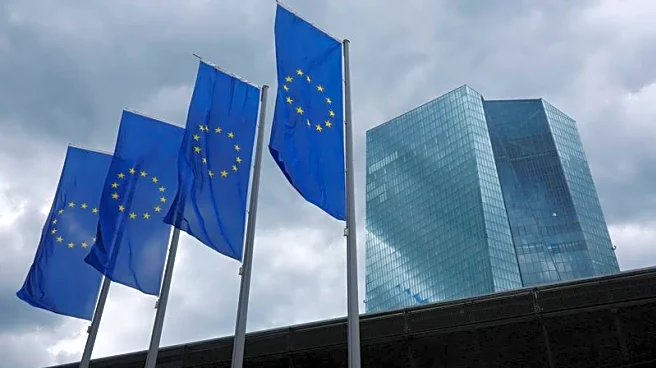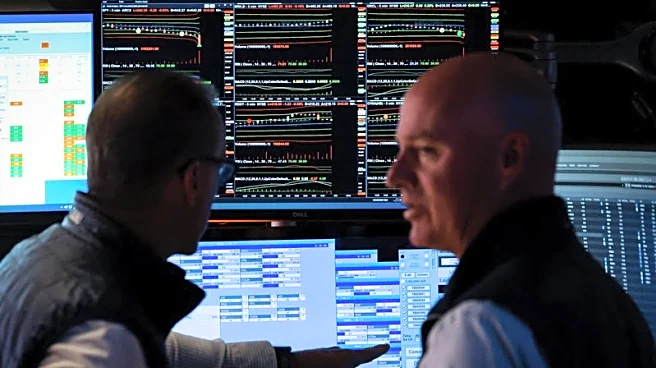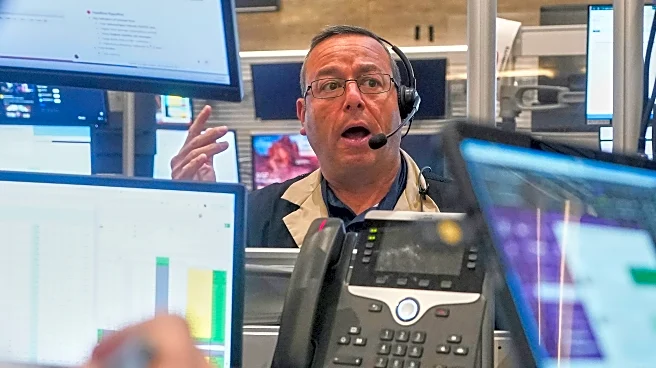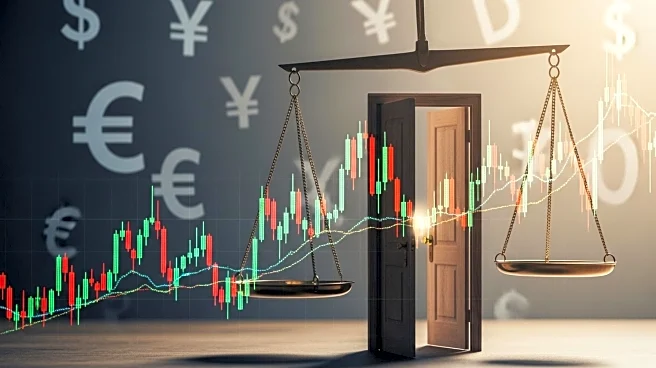What's Happening?
Gold prices have reached a new record high, surpassing $3,550 per ounce, as global markets experience volatility. This surge in gold value is attributed to investor uncertainty and a shift away from traditional investments like U.S. Treasuries. The increase in gold prices reflects a broader trend of investors seeking safe-haven assets amid geopolitical tensions and economic instability. The U.S. stock market, particularly the S&P 500, has seen significant declines, influenced by rising bond yields and challenges to the U.S. Federal Reserve's policies. President Trump's tariff policies have also contributed to market fluctuations, prompting investors to reconsider their portfolios.
Why It's Important?
The record high in gold prices underscores the growing investor anxiety over economic and geopolitical conditions. As a traditional safe-haven asset, gold's surge indicates a lack of confidence in fiat currencies and government securities. This shift could have profound implications for financial markets, affecting investment strategies and asset allocations. The volatility in stock markets, driven by factors such as tariff disputes and bond yield increases, highlights the fragility of current economic conditions. Investors and policymakers alike must navigate these challenges, balancing risk management with opportunities for growth. The situation may lead to increased scrutiny of fiscal and monetary policies.
What's Next?
The ongoing market volatility suggests that investors will continue to seek stability in assets like gold. Future economic data releases, including U.S. durable goods orders and jobless claims, will be closely watched for indications of economic resilience. Additionally, the Trump administration's response to recent court rulings on tariffs could further influence market dynamics. As geopolitical tensions persist, the demand for safe-haven assets may remain strong, potentially driving further increases in gold prices. Stakeholders in the financial sector will need to adapt to these evolving conditions, reassessing strategies to mitigate risks and capitalize on emerging opportunities.













